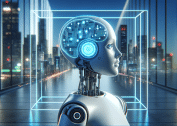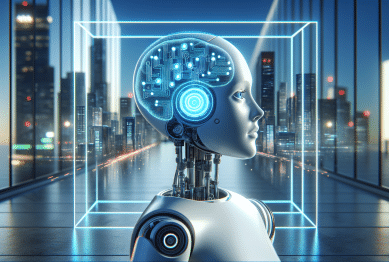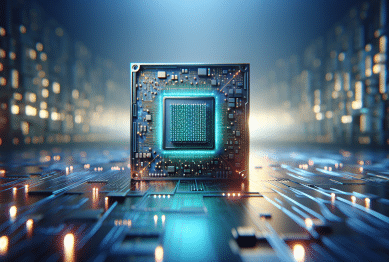Curious how artificial intelligence quietly transforms daily tech experiences? Dive into this in-depth guide exploring AI’s presence in gadgets, home tools, digital assistants, and online platforms. Discover ways AI touches routines, from smart homes to content recommendations, and learn what drives these intelligent changes.
AI In Everyday Gadgets: More Than Meets the Eye
Artificial intelligence no longer belongs only in science fiction — it’s humming quietly in everyday gadgets. Smartphones use AI-powered features like facial recognition, voice commands, and battery optimization. Personalization aligns choices with your preferences using complex algorithms. If you’ve used smart cameras that automatically focus or home speakers that offer music suggestions, you’re already engaging with AI-driven systems that learn and adapt over time.
The beauty of this technology is how seamlessly it integrates. Behind the scenes, your phone’s keyboard predicts words, suggesting contextually relevant emojis or corrective edits as you type. AI-enhanced photo apps create vibrant images, translating dull snaps into professional-looking shots. Some smart watches assess daily movements and gently nudge you toward healthier routines, thanks to trained models that recognize activity patterns. All of this happens unobtrusively, fitting right into your routine without extra work required.
AI’s silent assistance stretches to listening and learning. When you ask your digital assistant for directions or traffic updates, it taps advanced machine learning to process data and deliver answers fast. Many TVs also use AI to optimize picture quality, so colors look richer and action scenes stay smooth. Whether it’s entertainment, communication, or productivity, AI shapes countless small moments to feel effortless and more tailored to your daily use.
Smart Homes and AI: Living With Intelligent Automation
Smart home devices have become increasingly intuitive, turning ordinary spaces into responsive environments. Thermostats learn your temperature habits, making homes automatically comfortable day or night. AI-driven security cameras detect motion, recognize faces, and can even differentiate between a visitor and a passing pet, reducing unnecessary alerts. Voice-activated assistants, such as those from leading smartphone platforms, control lighting, manage shopping lists, and help families stay organized—all powered by AI.
These intelligent tools can also boost energy efficiency. Lights adjust brightness based on natural sunlight detected in the room, while smart plugs cut off power to idle appliances. Well-designed automation not only saves money but also lessens a home’s environmental footprint. As sensor-based networks grow smarter, the potential for seamless, energy-conscious living expands with it (Source: https://www.energy.gov/eere/buildings/articles/home-automation-building-america).
Emerging innovations point to even more sophisticated interactions between people and their homes. AI now helps with real-time language translation for family members or visitors who speak different languages. Smart refrigerators track expiration dates, suggest recipes, or reorder groceries, simplifying domestic chores. All these advances make daily routines smoother, giving more time back to focus on what really matters, as automation handles the repetitive tasks.
Personalized Content and AI Recommendations
Ever wondered why content feels so relevant on your favorite platforms? AI-driven recommendation engines scan viewing histories, social activity, and preferences to suggest shows, music playlists, or articles tailored to your interests. Video platforms use deep learning to curate watchlists, and streaming music apps conjure up custom mixes, using neural networks trained on vast datasets. Even news feeds, social media timelines, and online ads continually reconfigure based on engagement, thanks to AI algorithms at work.
This approach provides both convenience and efficiency. Browsing becomes faster as you spend less time searching and more time discovering content you genuinely enjoy. AI’s knack for pattern recognition can even help surface ideas or trends you might otherwise miss, fueling personal growth or introducing unexpected hobbies. However, it’s helpful to know that these systems aren’t perfect — sometimes, suggestions may skew towards what’s popular or click-worthy, rather than truly diverse options (Source: https://www.brookings.edu/research/algorithmic-bias-detection-and-mitigation-best-practices-and-policies-to-reduce-consumer-harms/).
Recommendation systems are always learning, improving with every interaction. For those wishing to fine-tune what appears, platforms often allow adjustments to content preferences and privacy controls. Understanding how AI works within these systems can empower individuals to steer the digital experience in directions that fit evolving needs—without feeling overwhelmed by choices or noise.
Healthcare and AI Powered Wearables
Wearable devices are making waves in health monitoring, thanks to embedded artificial intelligence. Today’s smartwatches and fitness trackers analyze heart rate, sleep patterns, and physical activity in real time. AI sorts through this data, highlighting irregularities that might warrant attention. Some models can spot early signs of health changes or alert users to trends, making healthy living more proactive and less reactive.
Beyond activity tracking, wearables are expanding toward more advanced diagnostics. AI-driven electrocardiogram features, for example, may help detect unusual heart rhythms. These tools assist healthcare professionals by collecting vast amounts of data, creating feedback loops between individuals and their medical teams. By giving people early indicators, wearables help start crucial conversations about well-being far sooner than traditional one-time checkups might allow (Source: https://www.nibib.nih.gov/science-education/science-topics/wearable-health-technology).
However, not all smart health tools are created equal. It’s important to research device accuracy, privacy practices, and compatibility with needs. AI-enabled wearables hold promise for preventive care, but checking the evidence and consulting healthcare providers can ensure these innovations fit safely into one’s lifestyle. Technology’s role continues to expand, and wearables remain at the forefront of digital health evolution.
AI in Transportation and Daily Commutes
The daily commute has grown smarter, with AI optimizing everything from navigation apps to rideshare services. Real-time traffic updates, alternate routes, and estimated arrival times rely on machine learning models that process millions of data points from mapping satellites, sensors, and smartphone users. These tools are designed to anticipate delays, accidents, and weather disruptions so travelers spend less time stuck in gridlock.
Public transportation systems also benefit from AI advancements. Smart ticketing, predictive scheduling, and operations management solutions streamline the flow of people and resources. Autonomous vehicle technology, still under active research and gradual rollout, leverages AI to interpret visual data, making independent driving a closer reality. For commuters, these developments mean a shift toward efficiency, with timetables and routes constantly adjusting to real-world demands (Source: https://www.transportation.gov/research-and-technology/artificial-intelligence-transportation).
It’s just the beginning. Mobility apps are starting to combine AI with public policy, supporting sustainable travel options and reducing carbon footprints. Accessible transportation – such as smart route mapping for people with disabilities – promises greater independence for a wider population. As these projects expand, daily movement becomes smoother, safer, and more responsive to personalized needs.
The Ethics of AI Use and Privacy Considerations
As artificial intelligence weaves deeper into daily life, questions about data privacy and ethical use are more relevant than ever. Many AI systems learn by analyzing personal habits, device interactions, and even speech patterns. If not carefully managed, these data flows can raise concerns about surveillance, security, or accidental misuse. Awareness of privacy settings and reviewing terms of service for apps and devices is increasingly vital.
Ethical AI also means addressing possible algorithmic bias. When machine learning training data are not balanced, systems may develop skewed interpretations—impacting everything from product recommendations to hiring tools. Researchers, policy makers, and tech companies are working together to build transparency and accountability frameworks. Informed users can check for companies with published AI ethics standards or independent reviews to feel more secure about their technology choices (Source: https://www.nist.gov/artificial-intelligence/ai-risk-management-framework).
Building trust in AI technology requires ongoing conversation. Regulatory proposals seek to safeguard against discrimination, data leaks, or misuse of personal information. Developers, users, and regulators all share responsibility in ensuring AI evolves responsibly. As technology advances, staying alert and informed ensures AI remains a beneficial companion, enhancing—not compromising—everyday life for everyone.
References
1. Office of Energy Efficiency & Renewable Energy. (n.d.). Home Automation for Efficient Living. Retrieved from https://www.energy.gov/eere/buildings/articles/home-automation-building-america
2. Brookings Institution. (n.d.). Algorithmic bias detection and mitigation: Best practices and policies to reduce consumer harms. Retrieved from https://www.brookings.edu/research/algorithmic-bias-detection-and-mitigation-best-practices-and-policies-to-reduce-consumer-harms/
3. National Institute of Biomedical Imaging and Bioengineering. (n.d.). Wearable Health Technology. Retrieved from https://www.nibib.nih.gov/science-education/science-topics/wearable-health-technology
4. U.S. Department of Transportation. (n.d.). Artificial Intelligence in Transportation. Retrieved from https://www.transportation.gov/research-and-technology/artificial-intelligence-transportation
5. National Institute of Standards and Technology. (n.d.). AI Risk Management Framework. Retrieved from https://www.nist.gov/artificial-intelligence/ai-risk-management-framework
6. American Association for the Advancement of Science. (n.d.). Artificial Intelligence Initiative. Retrieved from https://www.aaas.org/programs/artificial-intelligence









